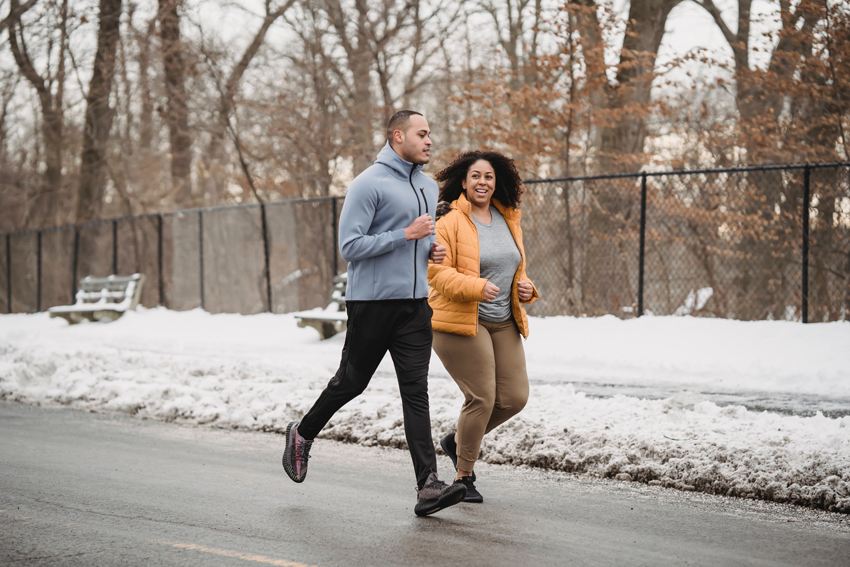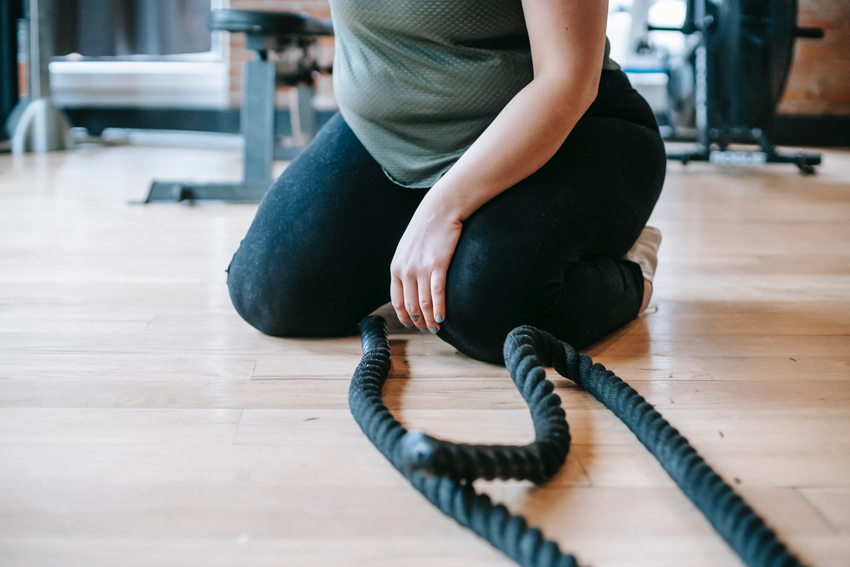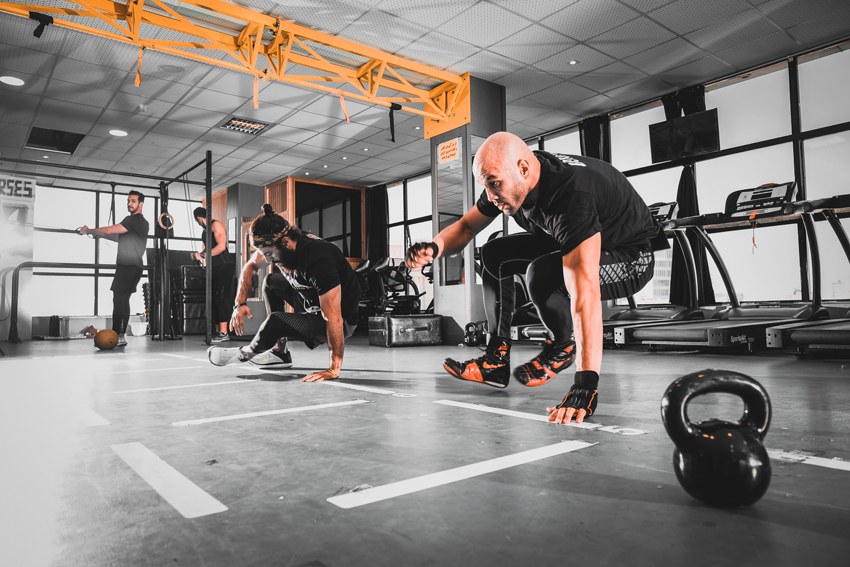Exercise is an important activity for everyone – especially if you’re trying to control your weight.
Weight management should help you to manage your own weight by looking at all of the different areas that affect our health and body, and exercise is one of the most important areas that should be covered.
Even if you’re taking medication to help with weight loss, you should still be taking part in exercise or increasing the amount of physical activity that you do each day.
Whilst medication is an incredibly valuable tool in weight management, it is conservative methods such as diet and lifestyle changes that will ultimately help you to keep the weight off in the long term.

Exercise can sometimes be seen as a chore or something that you should do if you’ve eaten something “unhealthy”.
In fact, many people see it as something that they have to do to lose weight.
Whilst it’s incredibly important in weight management, exercise shouldn’t be a chore or something to dread – it should be a celebration of what your body can do, and choosing the right forms of exercise for you should help you to not only increase your physical activity levels but to enjoy yourself whilst doing it.
Why is it important to exercise?
Exercise is important for many reasons.
It helps to strengthen bones and muscles, and it increases the amount of energy we use.
When looking at exercise and weight management, incorporating more physical activity into your life means that you’ll be using more energy and using up more calories, which should help you to achieve a reduction in weight and BMI.
If you’re exercising to lose weight, you’ll want to use more energy than you consume, so if you eat 2000 calories per day, you’ll want to be burning off enough energy to have a calorie deficit (consuming fewer calories than your body uses).
Most of the time, a calorie deficit results in weight loss (unless you have serious underlying health conditions, in which case you should speak to your own GP and healthcare team in order to find out what’s best for you).
Whilst you should be aiming for a calorie deficit, you should also remember that it’s important to get all of the nutrients that your body needs, and not to use up too much of your body’s energy, as it needs some to carry out everyday tasks and bodily functions.
You should still eat a healthy and balanced diet when you exercise so that your body still receives all the nutrients it needs to function.
On top of managing your weight and BMI, exercise is important for you to build strength and stamina, and to keep your body moving.
Many people with obesity struggle with exercise due to the excess weight that they carry, but increasing physical activity gradually can help to reduce this excess weight, and as your fat shrinks, your muscles should grow.
Muscle strength is important for your body, as muscles can help to support bones and organs, and whilst muscle weighs more than fat, it’s far healthier for your body.

In terms of weight, exercise has been proven to help maintain a healthy weight long-term, and it’s something that you should make time for each day, even if that means getting off the bus a stop earlier or taking the stairs at work instead of the lift.
All increase in physical activity is positive, and the less time you spend sedentary, the better it is for your health.
How much exercise should you be doing per week?
The NHS and UK government recommend that healthy adults should partake in at least 150 minutes of moderate-intensity exercise per week, or 75 minutes of vigorous-intensity activities.
If you spread 150 minutes out over seven days, it works out at roughly 20 minutes of exercise per day, which isn’t really that much to incorporate into a daily routine.
Whilst you don’t have to work out every single day, spreading out your exercise over the course of the week means that it’s more manageable and doesn’t take up a big chunk of your time.
Plus, exercising for two and a half hours all in one go can be incredibly tiring, especially if you aren’t used to doing it often.
You should be able to easily tell whether or not you’re working at a moderate intensity, as you should be able to talk but find it difficult to sing.
If you find it hard to talk then you’re likely doing vigorous-intensity exercise.
Most exercises can be made vigorous by increasing your speed or effort, but ultimately it’s up to you whether or not you choose to take part in vigorous activity.
If you have any pre-existing conditions such as cardiovascular disease or heart problems, you should speak to your GP or prescriber about the type of exercise you should be doing, as the vigorous activity may not be suitable for you.

In addition to the 150 minutes of moderate-intensity exercise that’s recommended by the government, it’s also a good idea to spend at least 2 days per week building muscle strength with low impact exercises such as yoga, pilates, using weights or other similar activities that help to strengthen your muscles.
This should ensure that your body progresses along with your stamina, and you should be able to increase the intensity of your activities once your muscles become stronger.
What is aerobic exercise?
The phrase “aerobic exercise” often conjures up images of people in leotards and lycra, but really all aerobic exercise means is “with oxygen”, meaning that your heart should be beating fast and your breathing rate should increase.
Aerobic exercise is sometimes more commonly referred to as “cardio” – in other words, it increases your heart rate whilst doing it.
Aerobic or cardio exercise has been proven to help maintain weight loss long-term, which is important for those that are currently going through weight management for obesity.
One of the main things with losing weight for medical reasons is keeping it off for good, and aerobic exercise is one way to make sure that your BMI won’t increase too much.
Good examples of aerobic exercise include:
- Brisk walking
- Running or jogging
- Dancing
- Rowing
- Biking
- Swimming (but not at a leisurely pace)
- Using a cross-trainer
- Skipping
- Climbing
Essentially, if exercise increases your heart and respiratory rate, there’s a good chance it’s aerobic!
Other forms of exercise which don’t increase your heart rate as much (such as yoga, tai chi, pilates etc.) are still incredibly good forms of exercise for building muscle, but as they aren’t aerobic, they may not help to maintain your weight long-term.
Whilst aerobic or cardio exercises can make you feel hot, sweaty and out of breath, it’s the best type of exercise for managing your BMI and maintaining your weight loss.

When you choose a type of aerobic exercise, make sure that it’s; something you enjoy, as you’re more likely to want to do it more often and not see it as a chore.
For example, many people enjoy dancing as a form of exercise but may not enjoy running.
The good news is that you don’t have to run if you don’t want to – as long as you’re doing some form of moderate aerobic exercise.
What are the benefits of exercise?
Exercise is one of the most beneficial activities that you can do for yourself.
Even if you don’t particularly enjoy exercise the benefits that it can bring to your health are worth the effort of doing some cardio a few times a week.
Exercising and physical activity isn’t just about weight management or losing weight – it’s about all of your health, both physically and mentally.
Lack of exercise can be responsible for many symptoms, so incorporating it into daily life should be something that’s welcomed with open arms, as it gives us a chance to improve our overall health instead of just focusing on weight.
Studies have shown that increased exercise can help to reduce the risk of cardiovascular disease and type 2 diabetes mellitus more than just weight loss alone, which is a huge factor to consider when obesity already increases the risk factor of these two conditions.
Increasing your physical activity can also help with your quality of sleep, which is also important for your overall health.
Using more energy than normal means that you’re more likely to be tired at night and get a good rest compared to doing no physical activity.
Sleep is also important when considering weight management, as studies have shown that 8 hours of good quality sleep can have a positive impact on reducing your BMI.
Increased quality of sleep is also beneficial for other reasons, as the body heals whilst we sleep, and it can improve concentration and energy levels.
In addition to these benefits, increasing your exercise can also help to reduce the risk of:
- Type 2 diabetes mellitus
- Cardiovascular disease
- Joint pain
- Back pain
- Some types of cancer
- Falls
- Low mood & depression
It’s good to have a variety of physical activity in your life to help you become strong as well as increase your heart rate, and whilst many people with a BMI of over 30 are in pain with muscles or joints, gentle and gradual exercise can help to improve these symptoms over time.
Mental benefits of exercise
As well as the physical benefits that exercise can have, it can also improve your mental well-being.
Exercise is a great way of releasing stress, as it means that you can let go of whatever is causing you to worry whilst still helping your body.
Some people use unhealthy coping mechanisms for stress such as smoking or drinking, but channelling that energy into exercise can help your mental health.

Many people that are regularly active take part in exercise for their mental wellbeing as much as their physical health.
When we exercise, our bodies release endorphins, which can interact with the brain and cause a feeling of pleasure, and physical activity can also help to temporarily increase levels of serotonin and dopamine – both of which are hormones that play a huge part in your overall mood.
If you already suffer from low mood or depression, it can be hard to find the motivation to get up and start exercising, but you should find that once you start, you may feel brighter in yourself.
It can also help with self-image and self-esteem due to the endorphins that are released as well as the long term benefits of exercise on your overall health.
How to start exercising
As we’ve already mentioned, there are several types of exercise, all of which are important to live a healthy life, but it can be hard to know where to start, especially if you’re new to physical activity.
First off, you might want to think about activities that you enjoy or a sport that you’d like to take part in.
When you do exercise that you enjoy, you’re more likely to want to do it.
Next, you might want to think about the kind of budget that you have.
The great thing about exercise is that it can be free, as your body is the main tool that you work with.
If you enjoy going to the gym then you may want to pay a monthly membership fee, but if this is off-putting to you or your financial situation won’t allow for a gym membership, there are plenty of free ways that you can boost your physical activity.
If you don’t usually exercise much, the best thing to do is start off gradually and gently so you don’t over-exert yourself too quickly.
Slowly building up strength and stamina is better than overdoing it and being out of action for a few days.
Incorporating more activity into your daily life can be as simple as taking a couple of extra trips upstairs to get your heart rate going, or taking a walk around your neighbourhood in the evenings.
You can also do things like walking a longer route to get to somewhere, or putting some music on to dance to.
There are so many different ways that you can incorporate exercise into your daily life, and with so many free ways to exercise, it should be something that everyone can do if they’re a healthy and able-bodied adult.
We do recognise that there will be some people that aren’t able-bodied, and can’t do as much exercise as is recommended by the government, so we will also be writing guidance for disabled and non-able bodied adults to help with increasing activity in small, manageable amounts for people that aren’t often ambulatory.


















